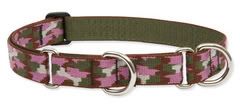Treat rewards on only used in the beginning stages to more quickly reinforce good behavior. Then becomes less frequent, and the dog will eventually require no treat reward at all, but there will always be praise. Positive reinforcement isn't all about treat rewards, it is about creating a positive association to good behavior through praise and other such rewards.
It also doesn't ignore discipline, it simply removes all of the harsh methods of used in disciplining, such as shock collars, pinch collars, yelling, beating, etc... Dogs will always aim to please, and will effectively behave if the commands are clear and consistent. There of course still has to be a pack leader, the leader just earns the position through consistent authority and positive motivation techniques.
Every dog responds to training differently, so positive reinforcement training must adapt to the individual dog and handler. For my dog treats aren't a primary motivation, 1. because even a sirloin tip wouldn't distract her while she's heavily distracted, and 2. because her allergies prevent the type of treats that would motivate her enough. She does get treat rewards occasionally, but only to solidly reinforce new training techniques, and commands. She is highly intelligent, almost to a fault. As I'm sure most hard headed bird dogs can be, or other extremely focused dogs. Treats have become relatively boring to her, so I have had to adapt as to not lose the positive motivation. Now her reward is done through praise and physical activity. Her only effectively powerful motivation now is playing Frisbee, and going for rides, walks, etc.. So in order for her to enjoy these things, she must behave. We do not go out to play until she is in a relaxed position, and only keep walking if she has a loose lead. This brings a positive association to my desired behavior, and she has learned with extreme effectiveness that behaving = having fun. I can't teach her positive behavior through harsh negative consequence, it only reinforces that the tools are in control and not myself. And instills a fear and aloofness, as opposed to self control and confidence.
I don't want my dog to not pull on a leash because she will get pronged, I want her to walk on a loose leash because I am in control, and won't allow her to get her way until she behaves in an appropriate way. The same with playing in the yard. I don't want her to stay in a perimeter out of fear of shock, I want to teach her that it is only exciting to be outside if she stays within the boundaries I set.
I am truly trying to share my input, that is why I'm explaining myself with such long posts. If I was simply just trying to disagree, or stir the pot, I wouldn't spend so much time thinking out my posts, I would just react through emotion. I grew up with family dogs, and positive reinforcement was an uncommon practice. But when I got my German Shepherd, and was old and responsible enough to fully provide for her, I really wanted to do the best by her that I could. The training that I have been given, and learned, has been a life changing experience for me. Dealing with a highly reactive dog, a German Shepherd at that, I have learned that there is no other way than patience and calm leadership. My dog would be a disaster if she had ended up in a home that used negative reinforcement, I know this because my previous trainer had a client with a litter mate of Ciana, same basic issues, but far worse off due to improper training methods of the owners.
So I feel that if I can create the desired behavior out of a dog like Ciana through positive reinforcement and appropriate, non harsh discipline methods, than it is a training that can be followed by any dog.
If you could have a perfectly behaved dog through positive reinforcement or negative reinforcement training, which would you choose? I am saying that any dog can be effectively trained through positive reinforcement, so why would someone choose the way of negative reinforcement? especially seeing it is often the cause of unstable, and fearful dogs.
PS. As for the docked tail. I've heard it is docked because it prevents future injury, which can be very painful in the future. Is this actually done for medical reasons, or because it is more aesthetically pleasing? Either way is fine, no debate here, I am just curious. The only docking I hate is the ear cropping, it looks awful, and is often used as a means to make the dog better in fights, or to look more intimidating.

